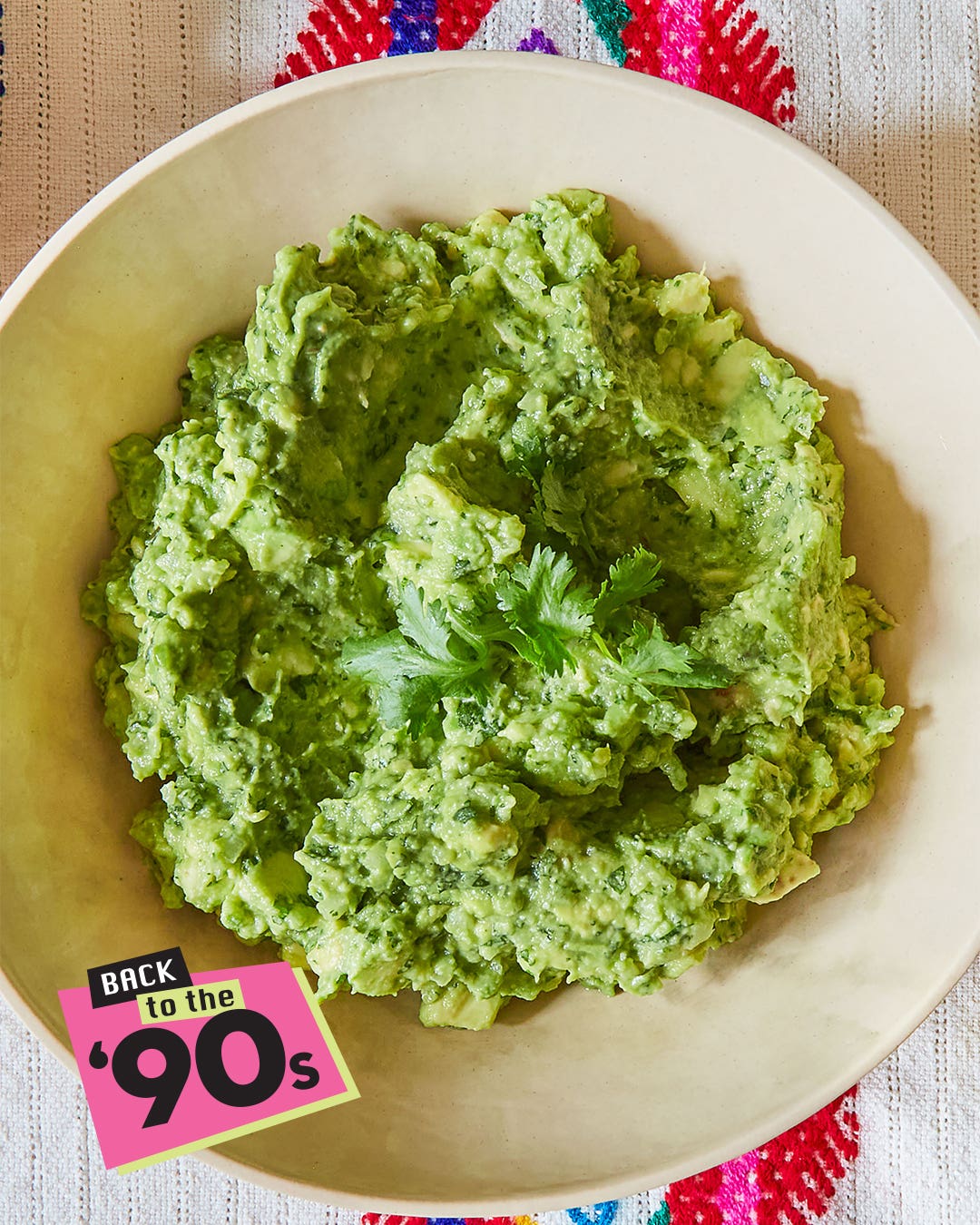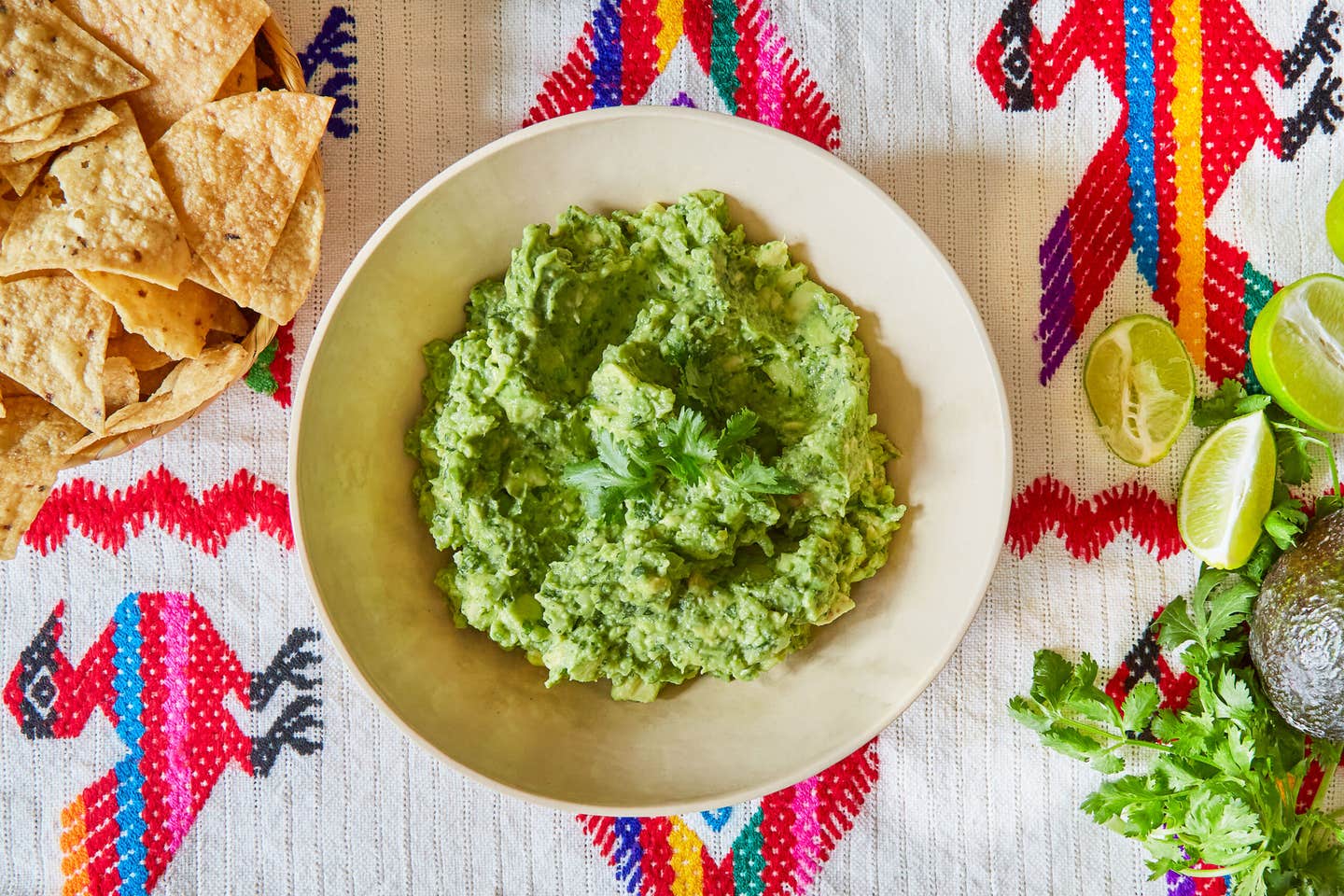The Unlikely Origins of Tableside Guacamole
How a 1994 trade agreement helped turn a Mexican condiment into an all-American obsession.

For millennia, people in what we now call Mexico have been mashing avocados into the guacamole-like dish ahuacamolli, but as recently as the 1990s, Americans were largely unfamiliar with the fruit we now know, love, and weaponize in generational disputes about personal finance.
But guacamole’s international success story has as much to do with geopolitics as it does with flavor. In 1994, the North American Free Trade Agreement (NAFTA) created a trilateral bloc including Canada, the U.S., and Mexico that forever transformed how Americans bought and ate avocados. Once difficult to find outside of a short growing season in California, Texas, and the Southwest, after the ratification of NAFTA, avocados were shipped in from Mexico year-round, competitively priced, and sold in almost every corner of the country. As with all things NAFTA, this development was controversial and had consequential and sometimes devastating repercussions on both sides of the border.
Starting in the mid-’90s, guacamole became especially popular in the United States. According to Gustavo Arellano, Los Angeles Times columnist and author of Taco USA: How Mexican Food Conquered America, “There was a point when more people in America knew about guacamole than knew about avocados.”
The fad’s timing wasn’t coincidental. “The avocado industry started promoting guacamole as a Super Bowl food […] shortly after the NAFTA agreement began allowing floods of avocados from Central and South America to enter the country in the winter,” Twilight Greenaway writes in Smithsonian Magazine.
Meanwhile, tableside guacamole proliferated in the ‘90s, at restaurants ranging from fast casual to fine dining. For those who haven’t had the pleasure, tableside guac can be a thoroughly theatrical experience. A server rolls a cart to your table and ceremoniously transforms avocados into guacamole before your eyes, tossing cilantro, lime juice, and other ingredients into a mortar as they skillfully pound the pestle. And it was bespoke: Diners could make their guac mild, medium, or hot.
To U.S. restaurant-goers unaccustomed to seeing the inner workings of professional kitchens, this proximity and personalization was thrilling. It evoked a similar sense of agency to the choose your own adventure appeal of a ‘90s salad bar. Plus, tableside guac gave diners a front-row view of all the ingredients, which felt novel in an era before it was commonplace for restaurants to tell customers what hyperlocal, possibly organic farm their chicken came from.
Los Gringos Locos, a restaurant in Southern California’s San Gabriel Valley, is one of several that claims to have invented tableside guacamole. According to company lore, in 1996, servers made guacamole in the dining room after being inspired by dishes like bananas foster that they’d seen “at only the la-de-da-est of restaurants.”
As such, its owner, Bent Hanson, seems to suggest that tableside guacamole springs in part from a far-flung French fine dining tradition of starchy waiters flambéeing crêpes Suzette, rather than Mexico’s own guest-facing cooking preparations. As Arellano of The Los Angeles Times points out, at Mexico's streetside taquerías and restaurants in private homes, many meals are prepared right in front of you, with or without ceremony. Tableside guacamole, then, simply appealed to American diners’ vision of Mexican hospitality. “People wanted to see [guacamole made tableside] because that was their idea of ‘authentic’ Mexican food,” he says.
It remains wildly popular to this day. As recently as 2017, San Antonio Current ranked the “legendary tableside guacamole” at Boudro’s Texas Bistro, a popular River Walk tourist destination, among the city’s top 100 dishes. In August of this year, national chain Uncle Julio’s announced that tableside guacamole was back and “better than ever” after a pandemic-related pause.
In Mexican cuisine, as in life, authenticity is subjective. There are countless ways to appreciate guacamole, be it as tableside theater, gateway to real or imagined Mexico, homage to Aztec culture, or casually nourishing snack. Trends change, cuisines evolve, and most foods and diners contain multitudes.
We find common ground in chef Roberto Santibáñez’s approach, which starts by pounding cilantro, chile, onions, and salt to a paste in a molcajete, then gently blending in chopped avocados and plenty of fresh lime juice.
Santibáñez’s method requires more effort than absentmindedly mashing aromatics into avocados with a fork while watching the Super Bowl pregame. But whether guacamole endures as a theatrical restaurant performance that rivets an entire table or as a late-night snack scooped up at the kitchen counter, the spread deserves our undivided attention.
Recipe

Keep Reading
Continue to Next Story










